As coaches and fitters, we are looking to optimise your equipment to help you perform better. This can be through a variety of changes including shaft, head material, head type, lie, length, grip, grip size and so on! One of the biggest changes to club equipment in the last few years is moveable/adjustable weights in the club head.
What do these weights do?
Using either heavier/lighter weights or moving the weight across the head shifts the Centre of Gravity (CG) in the head.
What is CG?
Centre of Gravity by definition is an imaginary point in an object in which all mass is evenly distributed. Imagine holding a golf club on the end of your finger and finding the balance point so the club just hangs, it doesn’t crash on the floor. Your finger is at the bottom of the CG location for the club.
“Lewis… Physics isn’t fun… why do I care about CG?”
When we dive into club design, CG makes a huge difference on your shot outcome, feel of the club and sound… have you ever thought why you prefer one driver compared to another… the answer could be CG.
Moving or shifting CG influences launch angle, spin rate, MOI (forgiveness) and closure rate.
Back to weights…
So we know that shifting CG has a significant effect on performance and feel in clubs, so how do we shift it? You guessed it… we either shift a moveable weight or change the amount of the adjustable weight.
What does this look like?
Here we can see the moveable weights in this driver have changed positions, which has changed the CG. The driver on the right has the weights further back, thus moving CG towards the back of the driver. This will promote higher spin and launch as well as more forgiveness.
On this driver, we can see an adjustable weight. We cannot move the weight across the head, however we can change the amount of weight in that port. You can see the weight is black with a red outline on the screw, this means it is +2g than standard. If we add weight to this port, it will shift CG backwards, just like the Taylormade driver previous. However, if we used a lighter than standard weight, we can shift CG forward.
“So, how much does CG actually move?”
You have a right to be sceptical!… golf manufactures talk about moving CG like they are shifting mountains and can come out with some outrageous claims like “5 more mph of ball speed than anything else”.
Using data from The Golf Lab, CG in different drivers does not change more than 15mm. Using one of last years drivers with sliding weights, they found moving all the weight forward, then all the way back only shifted CG by 3mm.
3 MILLIMETRES!?
CG is not moving crazy amounts, but even this slight change still has a massively significant effect on performance! Understanding where to move CG and how it will effect your performance is imperative for fitters and coaches.
“Is this only for drivers?” – NO
Different iron and wedge heads will contain different CG locations based on their design. You may have noticed some iron models with a screw in the toe end of the club. This is a weight which shifts CG towards the toe to increase MOI (forgiveness).
“What about putters?”
Even putters have adjustable weights in the bottom! Although less common today, in recent years weight packs have been available with buying a new putter. But do thy actually do anything?
Dr Paul Hurrion (founder of Quintic Ball Roll – a putting specific launch monitor) put adjustable weights in putters to the test (Click here for study). Using a robot, they tested different amount of weight in each port, moving CG towards the heel/toe as well as forward/backwards.
The results showed moving weight forward (this forward CG) changed how the stroke of the putter as well as launch conditions – good news for Cleveland who’s new putter range “frontline” has focussed solely on forward CG placement. Interestingly moving weight towards the back of the head had no significant change than normal weight placement. Also, moving weight towards the heel or toe effected the amount of side spin on the ball.
“Can we always see these weights and are they always adjustable?” – NO
In iron heads, tungsten is being used more and more to shift CG into certain locations. The image to the right is the new T200 Titleist iron and you can see the positioning of the tungsten “for outstanding MOI” (golf marketing at its finest).
Also, if we can see a screw or weight doesn’t always mean we can change or move it. These are mainly for display/marketing purposes or ease of mass production. The club has already been designed at the CG location so we cant mess around with it!
How do we know where CG is if we cannot see or change weights?
Being a certified Golf Lab Performance Fitter, allows us access to their amazing club database. This contains every newly released driver head in the market across all the manufactures. They measure each heads MOI, CG location, loft, lie and many other magical things!
The benefit of getting this from an independent organisation like the golf lab instead of the manufactures is:
- They actually tell us! – Most manufactures don’t give away their secret
- They measure consistently – each company could measure using different calibrations or equipment
- No marketing BS attached – being brand agnostic means there is no favouring certain brands due to extra rewards or incentives.
What can you take away from this?
Do you have to know the CG of every club in your bag? Probably not… but it is important for our coaches and fitters to understand what is means to YOU. You will require different CG locations based on how YOU deliver the club to the ball and how that impacts ball launch conditions, across every club in the bag.
So next time you ask someone to borrow a wrench to move a weight, or order a weight pack online and start fiddling with the head, think about how it will impact CG and your golf shot.
If you would like to understand more about this, feel free to harass me in store, via email or social media!
Lewis Clarke
@LClarkePCoach
LCPC@peterfieldgolf.uk









